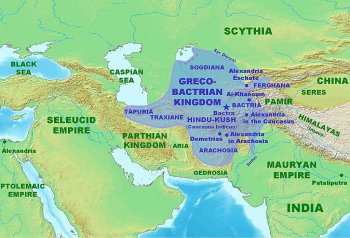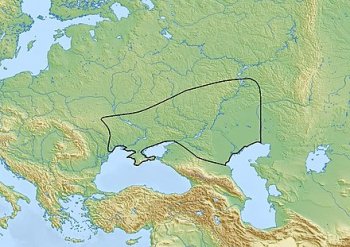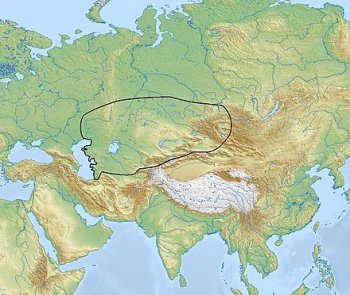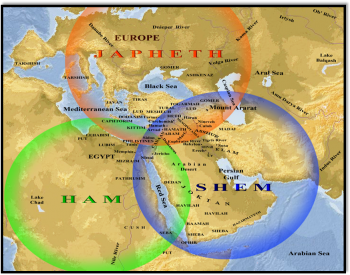Who is Gog and Magog seems to get lost in the weeds, people look at everything from todays perspective, not from the writers perspective. I am going to place these writings of Ezekiel in his perspective understandings, by showing what his contemporaries thought and said of these regions/peoples. This is the only real way to study Bible Prophecy.
1.) Hesiod, a Greek Didactic Poet, 8th century BC (200 years before Ezekiel) says the Magogians were the Scythians.
2.) Ezekiel is writing sometime around the 6th Century BC. Daniel was taken captive in 605 BC, Ezekiel taken captive in 587 BC, Jerusalem was destroyed in 586 BC.
3.) Herodotus, "Father of History," 5th century BC (100 years after Ezekiel) says the Scythians were the Magogites of the 10th - 3rd century BC. (1000 BC - 300 BC)
Philo, Josephus, et al called the Great Wall of China the "Ramparts of Gog and Magog", In other words he was saying Magog was coming towards them and they built a wall hold them off or stop them at the ramparts. So, whoever it is that is outside of China is this Magog peoples !!

Russian Archaeologists: One can go to the so called Russian version of the "Smithsonian" a museum and it has all kind of exhibits about the Scythians (Srubnaya & Andronvono )
The Srubnaya culture (Russian: Срубная культура, romanized: Srubnaya kul'tura, Ukrainian: Зрубна культура, romanized: Zrubna kul'tura), also known as Timber-grave culture, was a Late Bronze Age 1850-1450 BC culture[1][2] in the eastern part of Pontic–Caspian steppe.

The Andronovo culture (Russian: Андроновская культура Andronovskaya kul'tura) is a collection of similar local Late Bronze Age cultures that flourished c. 2000–1450 BC, in western Siberia and the central Eurasian Steppe.

These Scythians came from these groups of people above, notice how both of these peoples basically covered the same land mass over various times. The Scynthians were note hore riders, they are said to have been fearsome, they could ride at full speed, and turn and shoot arrows, while riding backwards, the spin on a dime and gallop away. They are why the Great Wall of China was built it is said. The Scynthians and all of these peoples from the Steppes mountain area are what Ezekiel pointed towards, "UP THAT WAY" in other words, over that horizon where the Persians, Greeks nor Romans dared to go. They were well know people, but they were up in a region all unto themselves. They are all descendants of Noah's son Japeth.

"From the utter most parts of the North"
The Scythians—the Greeks' name for this initially nomadic people—inhabited Scythia from at least the 1st century BC to the 2nd century AD. In the seventh century BC, the Scythians controlled large swaths of territory throughout Eurasia, from the Black Sea across Siberia to the borders of East Asia. Its location and extent varied over time, but it usually extended farther to the west and significantly farther to the east than is indicated on the map.
Scythia was a loose nomadic empire that originated as early as the 8th century BC. Scythian culture centered around equestrianism and a free-riding way of life. No writing system that dates to the period has ever been attested, so the majority of written information available today about the region and its inhabitants at the time stems from proto-historical writings of ancient civilizations which had connections to the region, primarily those of Ancient India, Ancient Greece, Ancient Rome, and Ancient Persia. The most detailed western description is by Herodotus.
He may not have travelled in Scythia and there is scholarly debate as to the accuracy of his knowledge, but modern archaeological finds have confirmed some of his ancient claims and he remains one of the most useful writers on ancient Scythia. He says the Scythians' own name for themselves was "Scoloti".
The Pontic–Caspian steppe: Southern Russia, Russian Volga, South-Ural regions and western Kazakhstan (inhabited by Scythians from at least the 8th century BC)
The plains (steppes) from the Black Sea to Lake Baikal (based on genetic evidence).
The Kazakh Steppe: northern Kazakhstan and the adjacent portions of Russia
Sarmatia, corresponding to eastern Poland, Ukraine, southwestern Russia, and the northeastern Balkans,
Sakā Tigraxaudā ("the Sakas of the Pointed Caps"), corresponding to parts of Central Asia, including Kyrgyzstan, southeastern Kazakhstan, and the Tarim Basin
Sistan or Sakastan, corresponding to southern Afghanistan, Sistan and Baluchestan Provinces of Iran, and Balochistan, Pakistan, extending from the Sistan Basin to the Indus River. Following successive invasions of the Indo-Greek kingdoms, the Indo-Scythians also expanded east, capturing territory in what is today the Punjab region.
Parama Kamboja, corresponding to northern Afghanistan and parts of Tajikistan and Uzbekistan
Alania, corresponding to the North Caucasus
Scythia Minor, corresponding to the lower Danube river area west of the Black Sea, with a part in Romania and a part in Bulgaria
1.) Hesiod, a Greek Didactic Poet, 8th century BC (200 years before Ezekiel) says the Magogians were the Scythians.
2.) Ezekiel is writing sometime around the 6th Century BC. Daniel was taken captive in 605 BC, Ezekiel taken captive in 587 BC, Jerusalem was destroyed in 586 BC.
3.) Herodotus, "Father of History," 5th century BC (100 years after Ezekiel) says the Scythians were the Magogites of the 10th - 3rd century BC. (1000 BC - 300 BC)
Philo, Josephus, et al called the Great Wall of China the "Ramparts of Gog and Magog", In other words he was saying Magog was coming towards them and they built a wall hold them off or stop them at the ramparts. So, whoever it is that is outside of China is this Magog peoples !!

Russian Archaeologists: One can go to the so called Russian version of the "Smithsonian" a museum and it has all kind of exhibits about the Scythians (Srubnaya & Andronvono )
The Srubnaya culture (Russian: Срубная культура, romanized: Srubnaya kul'tura, Ukrainian: Зрубна культура, romanized: Zrubna kul'tura), also known as Timber-grave culture, was a Late Bronze Age 1850-1450 BC culture[1][2] in the eastern part of Pontic–Caspian steppe.

The Andronovo culture (Russian: Андроновская культура Andronovskaya kul'tura) is a collection of similar local Late Bronze Age cultures that flourished c. 2000–1450 BC, in western Siberia and the central Eurasian Steppe.

These Scythians came from these groups of people above, notice how both of these peoples basically covered the same land mass over various times. The Scynthians were note hore riders, they are said to have been fearsome, they could ride at full speed, and turn and shoot arrows, while riding backwards, the spin on a dime and gallop away. They are why the Great Wall of China was built it is said. The Scynthians and all of these peoples from the Steppes mountain area are what Ezekiel pointed towards, "UP THAT WAY" in other words, over that horizon where the Persians, Greeks nor Romans dared to go. They were well know people, but they were up in a region all unto themselves. They are all descendants of Noah's son Japeth.

"From the utter most parts of the North"
The Scythians—the Greeks' name for this initially nomadic people—inhabited Scythia from at least the 1st century BC to the 2nd century AD. In the seventh century BC, the Scythians controlled large swaths of territory throughout Eurasia, from the Black Sea across Siberia to the borders of East Asia. Its location and extent varied over time, but it usually extended farther to the west and significantly farther to the east than is indicated on the map.
Scythia was a loose nomadic empire that originated as early as the 8th century BC. Scythian culture centered around equestrianism and a free-riding way of life. No writing system that dates to the period has ever been attested, so the majority of written information available today about the region and its inhabitants at the time stems from proto-historical writings of ancient civilizations which had connections to the region, primarily those of Ancient India, Ancient Greece, Ancient Rome, and Ancient Persia. The most detailed western description is by Herodotus.
He may not have travelled in Scythia and there is scholarly debate as to the accuracy of his knowledge, but modern archaeological finds have confirmed some of his ancient claims and he remains one of the most useful writers on ancient Scythia. He says the Scythians' own name for themselves was "Scoloti".
The Pontic–Caspian steppe: Southern Russia, Russian Volga, South-Ural regions and western Kazakhstan (inhabited by Scythians from at least the 8th century BC)
The plains (steppes) from the Black Sea to Lake Baikal (based on genetic evidence).
The Kazakh Steppe: northern Kazakhstan and the adjacent portions of Russia
Sarmatia, corresponding to eastern Poland, Ukraine, southwestern Russia, and the northeastern Balkans,
Sakā Tigraxaudā ("the Sakas of the Pointed Caps"), corresponding to parts of Central Asia, including Kyrgyzstan, southeastern Kazakhstan, and the Tarim Basin
Sistan or Sakastan, corresponding to southern Afghanistan, Sistan and Baluchestan Provinces of Iran, and Balochistan, Pakistan, extending from the Sistan Basin to the Indus River. Following successive invasions of the Indo-Greek kingdoms, the Indo-Scythians also expanded east, capturing territory in what is today the Punjab region.
Parama Kamboja, corresponding to northern Afghanistan and parts of Tajikistan and Uzbekistan
Alania, corresponding to the North Caucasus
Scythia Minor, corresponding to the lower Danube river area west of the Black Sea, with a part in Romania and a part in Bulgaria
Last edited:

